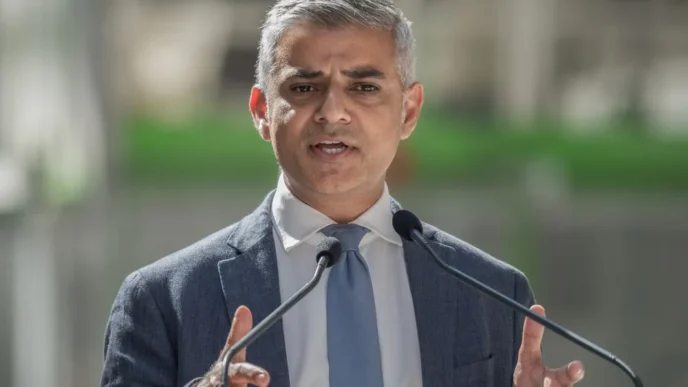Ukraine has stepped up its campaign of long-range drone and missile attacks on Russia’s energy sector, striking multiple facilities overnight in what appears to be one of its most extensive assaults on the country’s industrial and fuel infrastructure to date. The escalation underscores Kyiv’s shift toward targeting the economic backbone of Russia’s war machine, just as the region braces for another bitter winter of energy warfare.
A Coordinated Overnight Offensive
According to Ukrainian defense officials and independent monitoring groups, a wave of long-range drones launched from Ukrainian-held territory struck energy facilities across western and southern Russia in the early hours of Tuesday morning. The attacks reportedly hit oil depots, refineries, and power substations in several regions, including Bryansk, Belgorod, and Kursk — all within striking distance of the Ukrainian border — as well as deeper into Russia’s interior, where energy assets are critical to sustaining military logistics.
Russian authorities acknowledged “attempted attacks” on key energy infrastructure but claimed that most of the drones had been intercepted. However, local reports suggested significant fires and explosions at several sites, particularly at a fuel storage terminal in Bryansk and a refinery near Ryazan, a region that has been repeatedly targeted in recent months.
Satellite imagery and social media footage shared by Russian residents appeared to show large plumes of smoke and flames rising from industrial zones, lending credibility to claims of successful strikes.
“Our operations are designed to limit Russia’s capacity to wage war and destroy Ukraine’s cities,” said a Ukrainian military source quoted by local media. “Every liter of fuel we deny them is one less missile they can launch.”
Kyiv’s New Strategy: Targeting the War Economy
Ukraine’s attacks on Russian energy assets mark a strategic evolution in its broader defense and deterrence efforts. Having endured two years of relentless missile barrages against its own energy grid, Kyiv has increasingly sought to take the war to Russia’s industrial heartland, mirroring Moscow’s own tactics but focusing on military-related energy facilities rather than civilian grids.
This campaign, led primarily by Ukraine’s Main Intelligence Directorate (GUR) and Security Service (SBU), is designed to undermine Russia’s logistics, fuel production, and export revenue — all of which are crucial to sustaining its war in Ukraine.
Analysts note that these strikes have become more precise, more frequent, and more coordinated, suggesting advances in Ukraine’s indigenous drone technology and targeting intelligence.
“Kyiv is demonstrating both capability and intent,” said Andriy Zagorodnyuk, former Ukrainian defense minister. “Russia’s refineries, fuel depots, and rail hubs are now legitimate targets because they sustain the war effort.”
The Economic Fallout Inside Russia
The cumulative effect of these strikes is beginning to ripple across Russia’s domestic energy landscape. Several refineries have been forced to halt or reduce output, particularly in western regions close to Ukraine.
Energy analysts estimate that up to 10% of Russia’s refining capacity has been disrupted by Ukrainian attacks since the beginning of the year. This has forced Moscow to reroute crude oil exports, prioritize military fuel supply chains, and in some cases import refined products from allies such as Belarus to stabilize its domestic market.
These attacks have also affected Russia’s export earnings, particularly from oil derivatives like diesel and jet fuel, which are major sources of foreign currency revenue.
“Even if production quickly resumes, the psychological and logistical impact is enormous,” said Tatiana Orlova, a London-based economist specializing in Eastern Europe. “Russia is being forced to divert resources to repair and defend facilities that are hundreds of kilometers from the front line.”
Russia’s Response: Bolstering Air Defenses and Retaliating
In response, Russian authorities have intensified air defense deployments around key energy and industrial sites, installing additional radar systems and short-range anti-drone batteries.
The Kremlin has also vowed to retaliate. Russian forces have launched new missile and drone attacks on Ukrainian power plants and grid infrastructure, particularly targeting Kyiv, Kharkiv, and Dnipro, in an effort to disrupt Ukraine’s energy supply ahead of the winter heating season.
“These are reciprocal measures,” a Russian defense official told state media. “If Kyiv insists on targeting our infrastructure, we will respond in kind — decisively and symmetrically.”
Still, military analysts note that Ukraine’s long-range strike capacity is asymmetric but effective. While Russia can devastate cities with large missile salvos, Ukraine’s smaller-scale, precision drone operations have proven capable of striking deep within Russian territory — including as far as 1,000 kilometers from the front.
Western Ambivalence Over Deep-Strike Operations
Ukraine’s growing ability to strike Russian infrastructure has drawn mixed reactions from Western capitals.
While allies in Washington, London, and Brussels have publicly emphasized Ukraine’s right to self-defense, some have privately expressed concerns that the attacks could escalate the conflict or provoke retaliation against NATO-linked assets.
The U.S. has reportedly restricted Ukraine from using American-made long-range weapons to hit targets inside Russia, insisting that Western-supplied arms be used only within Ukrainian territory. However, Kyiv’s drone programs rely primarily on domestically produced systems, giving it greater operational independence.
“Ukraine is walking a fine line — striking at Russia’s war economy without crossing Western red lines,” said Michael Kofman, a military analyst at the Carnegie Endowment for International Peace. “So far, it’s been tactically smart and strategically impactful.”
Energy as a Weapon — Again
The renewed strikes mark a mirror image of the energy warfare that Russia unleashed on Ukraine in late 2022 and 2023, when months of missile attacks plunged much of the country into darkness and cold.
Now, as the third winter of war approaches, Kyiv appears determined to flip the script. Rather than waiting for Russia to strike first, Ukraine is moving proactively to weaken Moscow’s ability to sustain both its war effort and its domestic stability.
Energy infrastructure has become not just a logistical target, but a symbol of resilience and retaliation.
“Every attack sends a message,” said a Ukrainian defense spokesperson. “You cannot destroy our grid and expect yours to remain untouched.”
What Comes Next
Military experts anticipate that Ukraine’s campaign will intensify further in the coming months. Advances in drone range, payload capacity, and electronic warfare resilience are enabling Kyiv to reach deeper into Russian territory, including oil hubs on the Volga River and near the Black Sea coast.
Meanwhile, Russia’s own winter assault on Ukraine’s energy network has already begun, with missile and drone attacks once again targeting power plants and district heating systems.
Both sides are entering what may become a winter of reciprocal energy warfare — one fought not only with weapons, but with economic pressure, psychological endurance, and the battle for control over light and heat.
Conclusion: A New Phase of the War
Ukraine’s overnight strikes on Russia’s energy infrastructure signal a decisive new phase in the war — one that goes beyond territorial defense and toward economic attrition.
As Kyiv leverages drones to erode Moscow’s industrial base, the battlefield is expanding into the realm of long-term sustainability and national resilience. Each explosion at a Russian refinery or power station is not just a tactical success but a strategic statement: that Ukraine, despite fatigue and resource constraints, retains both the ingenuity and will to fight back on every front.
Whether this strategy accelerates Russia’s economic strain or provokes a dangerous escalation remains to be seen. But one thing is clear: the war’s front lines now extend far beyond the trenches of Donetsk and Zaporizhzhia — they run through the pipelines, substations, and refineries that power the Russian state itself.















